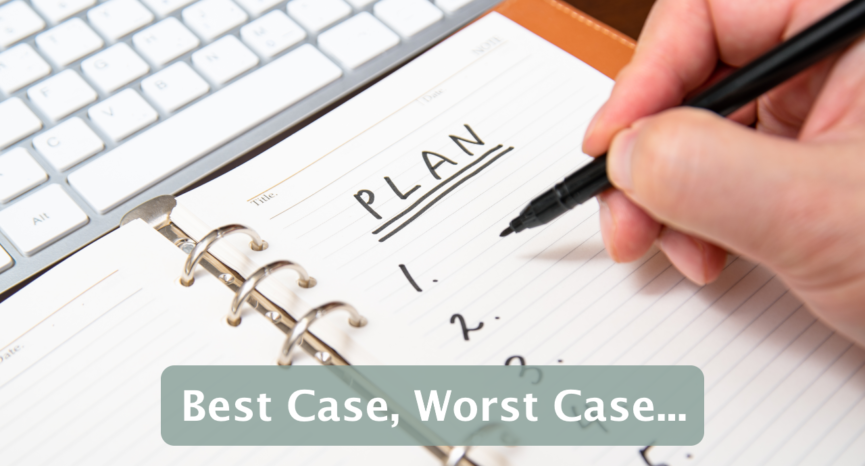Best Case, Worst Case…
What have we learned from the Omicron surge that will be invaluable in preparing for future scenarios?
I first posted this piece on December 22, 2021, as many were heading into the holidays, with new data out of South Africa about the Omicron variant and signs of an imminent surge here in the US. As I combed over the cross-generational data out of South Africa, I wrote this piece.
It’s lessons are timeless.
The timing couldn’t have been worse as healthcare workers, staff, and leaders prepared for a long-awaited and much-deserved holiday season. But before heading out for the holidays, I urged organizations to first ask these critical questions: Are you ready? Really ready for what happens next?
These 10 steps can help you in innumerable situations in the future, whether a crisis or a simply a situation with several unknowns and therefore high uncertainty.
I’ll keep this short, simple, and practical so you can get right to it!
1. What is the best-case scenario for your organization(/department/unit/program) over the next 2-8 weeks with Omicron coming on the heels of Delta? Describe the best-case scenario in a few sentences.
- For example: We will have ⅓ of our staff out over the next 2-8 weeks for 3-5 days each. While these will be unplanned call-outs for illness, they will be staggered. In addition, we will have an increase of 10% in the demand for our services during this same time period.
2. What is the worst-case scenario? Describe in a few sentences.
- For example: We will have ⅓ to ½ of our staff out (unplanned) over the next 2-8 weeks all at the same time but don’t know exactly when. This will range from 3-5 days out sick for half of those, to 10 days out for the other half. In addition, we will have an increase of 25% in the demand for our services over the next 2-8 weeks while this is occurring.
3. What are the proactive steps to take to be ready for the best-case scenario?
4. What are the proactive steps to take to be ready for the worse-case scenario?
5. Beyond the steps to get ready, what are the additional steps you could take to decrease the chances of the worst-case scenario occurring?
6. What are the additional steps you could take to decrease the impact of the best-case scenario?
7. What are the additional steps you could take to decrease the impact of the worst-case scenario?
8. What is your contingency plan (the additional steps you will put in place) if the worst-case scenario occurs?
9. Who else can you run this by to minimize your blindspots?
- What could go wrong with your plans? Make a list.
- How likely are these to happen (probability, low to high 1-10)?
- How serious are the consequences if these happened (seriousness, low to high 1-10)?
- Multiple those two numbers together for each item on the list.
- For the highest scoring items (p * s) on this list, what additional steps can you add into your plans to mitigate against and/or develop a contingency plan for these things that could go wrong?

There you have it:
Scenario-based planning.
Risk assessment.
Mitigation Planning.
Contingency Planning.
All in a nutshell.
Pull a key group together. Work through these 10 steps.
Increase your preparedness. Decrease your risks. Have a plan.
In fact, have a Plan A, a Plan B, and a Plan C. (That’s what these 10 steps will produce!).
In this scenario, it is much better to have a plan that you won’t have to use than to not have a plan at all!!
If you’d like to receive these Inspirations in your inbox every other week, you can subscribe to Kathy’s Excellence Advantage Inspirations Newsletter.
Kathy Letendre, President and Founder of Letendre & Associates, advises organizations and leaders to create their excellence advantage.
Contact Kathy by phone or text at 802-779-4315 or via email.

